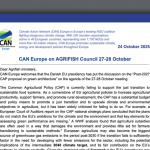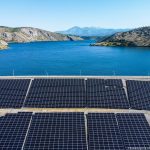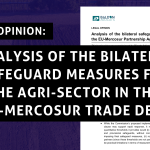As many pieces of legislation try to organise industry’s transition, CAN Europe proposes its vision for a better planned transition, taking people and the environment at its heart.
The destination of climate-neutrality for heavy industry matters and so does the journey
To avoid squeezing the planet for more than it can give us, , including not overshooting the 1.5°C climate target, the most polluting industries need to transform their value chains, production processes and business models. The EU now has a historic opportunity and responsibility to guide such an unprecedented industrial transformation, through increased action and putting citizens at the core to have a say in it.
“The transition will be messy”, said one of the speakers in a recent webinar covering the demand-side management and sufficiency from the latest IPCC report. Despite our best wishes, we can’t expect anything else from this economy-wide undertaking transformation of the EU economy. Neither can it be an argument to delay or postpone such an important transition. As it will impact 27 countries and 447.7 million citizens, the EU must make elements of this transition smoother, so things are less messy.
Let’s look at pathways, plans and roadmaps (or whatever we call the tools that are meant to show key aspects of direction, including ideally the speed of travel at the company, installation, sector or ‘industrial ecosystem’ level). At EU and national levels, several tools are being developed and they are in great need of better organisation.
Plan-tastic!
Within the EU policy framework, several planning tools are multiplying to ensure that companies, sectors and ‘industrial ecosystems’ (more on the latter later), can monitor and communicate on their performance in achieving various policy objectives. At the moment, those tools are lacking coherence and it is not clear how they will act in synergy.
Looking at the tools individually, we identified at least 5 directly relevant for industry:
- Climate-neutrality plans: These are part of the revised EU Emissions Trading System (ETS) and will be required of the 20% worst-performing installations if they do not want to see the share of their free allocations cut by 20%.
- Transformation plans: In its proposal for a revised Industrial Emissions Directive (IED), the Commission introduced plans describing industrial sites’ transformation “towards a clean, circular and climate neutral industry” between 2030 and 2050. This is part of the objective of bringing the IED in line with EU Green Deal objectives on climate, circularity and zero pollution.
- Corporate plans: Through a proposed corporate sustainability due diligence directive (CSDDD), the Commission set out that companies will need to have a plan “ensuring that the business model and strategy are compatible with the transition to a sustainable economy and with the limiting of global warming to 1.5°C in line with the Paris Agreement”. The CSDDD is meant to work in harmony with the corporate sustainability reporting directive (CSRD) which sets out disclosure requirements along the same lines as the CSDDD plans.
- Sectoral roadmaps: Set out in the European Climate Law, the legislation requires the European Commission to engage with sectors that “choose to prepare indicative voluntary roadmaps towards achieving the climate-neutrality objective” of the European Green Deal.
- Transition pathways: Part of the implementation of the EU 2021 updated industrial strategy includes elaborating pathways for ‘industrial ecosystems’* where these are considered necessary. The concept of an ‘industrial ecosystem’ goes beyond a company’s or sector’s supply or value chains to include all actors operating in a value chain. These can include companies of all sizes, academia and research, service providers and suppliers, and even beyond. See our blog “The case of the disappearing energy-intensive industries transition pathway”.
A multiplication cannot create more division
By organising those multiplying initiatives from different policy files requiring companies or sectors to draw up plans based upon the internal coherence of a legislation, the EU can reduce the ‘messiness’ of industrial transformation. The most coherent approach can be woven amongst the pieces of industrial legislation by ensuring that each one makes reference to the others, especially as companies will find an integrated approach more cost-effective. Finding synergies between actions addressing different impacts will help reduce costs and efforts needed.
And so will the articulation between the different layers of action and the plans: specific transformation plans developed at the process level for industrial installations must complement the wider corporate and sectoral roadmaps to provide more granularity to a company’s contribution to the EU climate, environmental, circular economy and zero pollution targets.
This integration of the local level should be made for citizens (e.g. workers, communities living around plants) who need to be provided with more transparency by companies, to allow citizen (and worker) scrutiny and ownership of the transformation.
Consistency in adopting this holistic approach to the industrial transformation will also enable business model changes that are instrumental to anchor resilience in industrial activities at a time of converging crises (energy price hikes, the knock-on effects of energy supply due to the Russian invasion of Ukraine, supply chain disruptions).
A different light at the end of the (carbon) tunnel
The EU’s industrial transition has so far wandered in a carbon tunnel, mainly focusing on CO2 emissions reductions (although not comprehensively and quickly enough). If the focus remains purely on a technological and end-of-pipe approach, it entails a significant risk of transferring impact burdens to habitat destruction through increased mining. Unless we adopt an integrated approach to the transformation, addressing climate crisis, biodiversity loss (through materials consumption) and pollution together.
Legislation on climate – for instance the landmark Fit for 55 – has primarily focused on lowering greenhouse gases and was blind to the question of resource consumption, including for the energy transition. For example, for the EU iron and steel industry, its proposed technological decarbonisation approach would require four times the current electricity consumption by 2050.
We know that 90% of biodiversity loss and water stress and 50% of greenhouse gas emissions are due to resource extraction and processing of materials, fuels and food, so we need strong synergies between two sides of the same coin: climate and biodiversity objectives.
Plans should therefore reflect an integrated approach with indicators on raw materials, energy and water as well as other demand-side measures to make sure that the transformation in Europe neither ends up shifting burdens onto Global South countries or destruction of lands overseen by Indigenous peoples, nor drives the EU further into extractivism, thereby triggering ripple effects on local communities, pollution and land-use change.
Planning is a central piece of the transformation on the road to 2050. But the current state of plans needs more to avoid the planet derailing: articulation between the global and the local level, an integrated approach on climate and other environmental objectives, with monitoring and regular public reporting to pave the way and avoiding kicking the can further down the road. Companies must be held to the societal needs on an increasingly hot and crowded planet so the rules of the game are clearly set out and drive companies towards transformative change in their production and consumption impacts. Let’s start tidying up!
References:
- Communication from the European Commission, “A new Circular Economy Action Plan for a cleaner and more competitive Europe”, March 2020, COM(2020) 98 Final
- Recommendations for a consistent EU regulatory framework on corporate sustainability targets and transition plans, WWF, November 2022
- Communication from the Commission – Towards a competitive and clean European steel, COM(2021) 350 final, 5 May 2021
* 14 ‘industrial ecosystems’ have been identified by the DG GROW: aerospace and defence; agri-food; construction; cultural and creative industries; digital; electronics; energy-intensive industries; energy-renewables; health, mobility-transport-automotive; proximity, social economy and civil security; retail; textile; and tourism.



